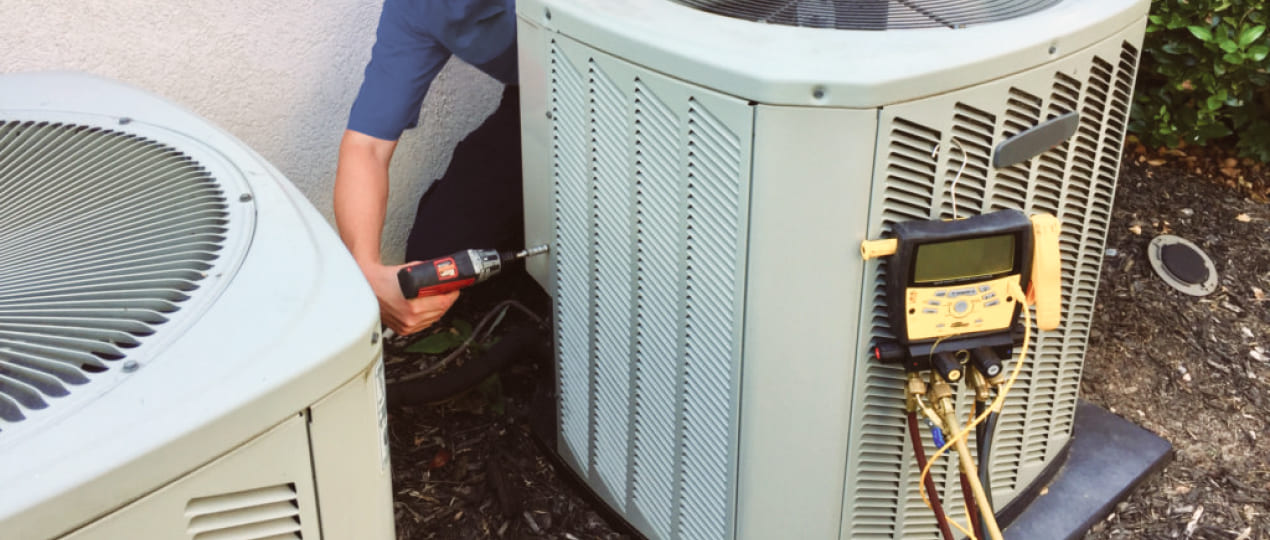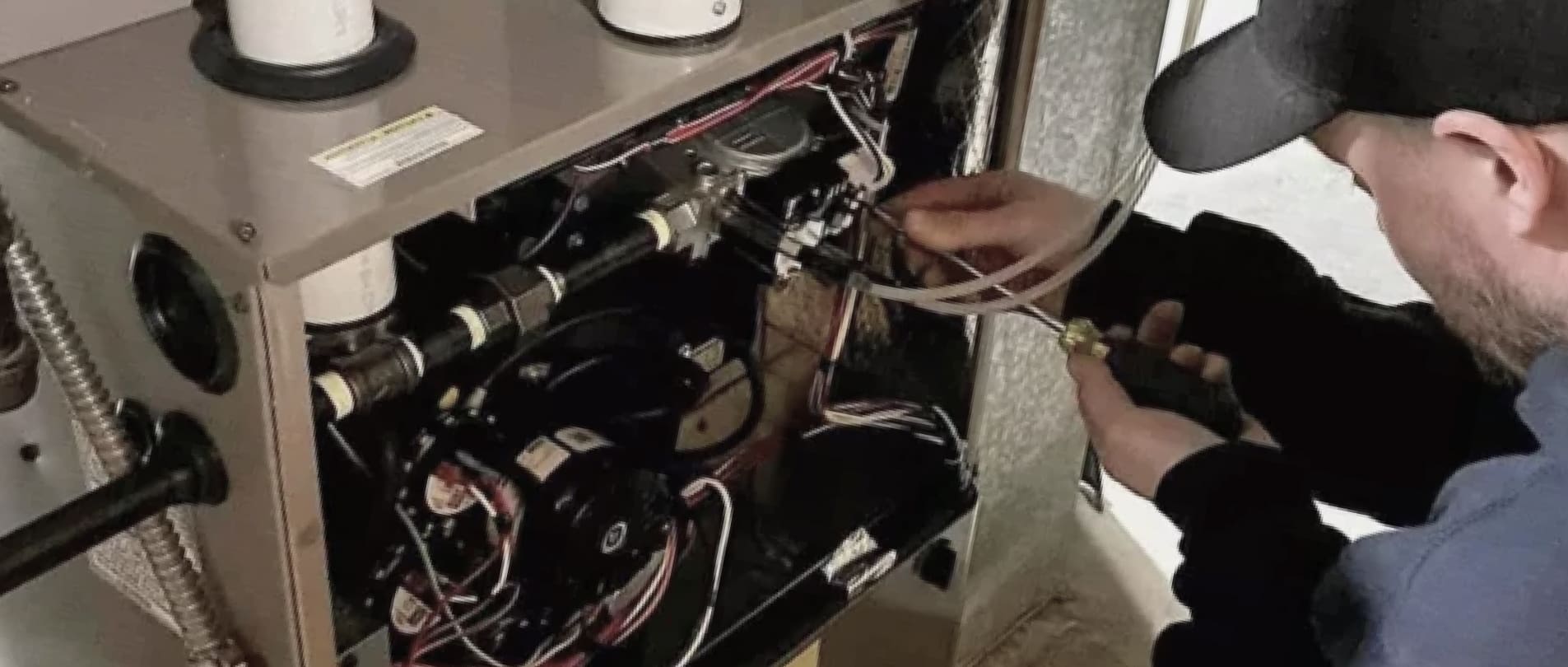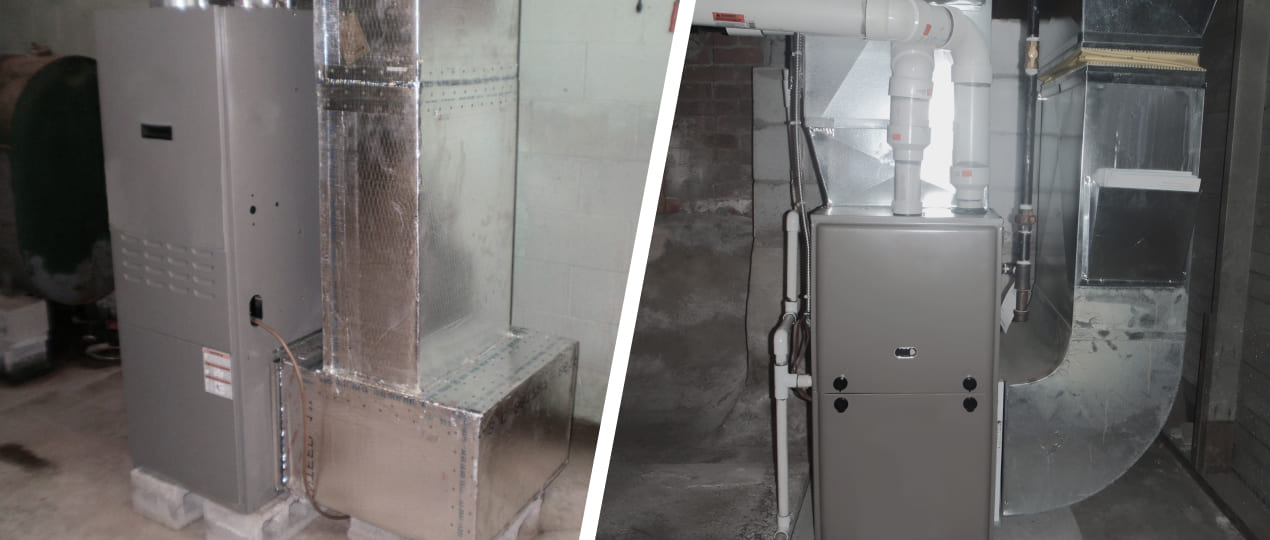
What is a furnace?
This appliance is a critical part of your HVAC system. It keeps your home warm by converting fuel into heat energy through combustion, producing hot air and distributing it through the ductwork, thereby maintaining a comfortable temperature. Thus, installing a new furnace is a smart idea.
Types of furnaces
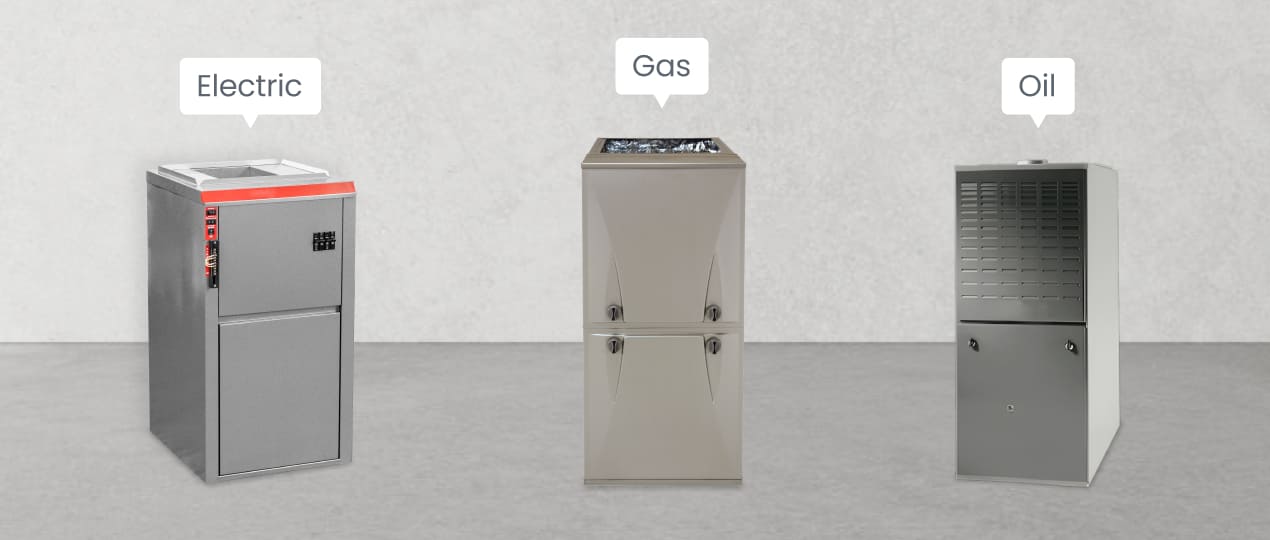
Fortunately, these days, the market offers a number of options. There are three main types:
- Electric models These are similar to gas furnaces, but the heat exchange is accomplished by electricity. An electric one draws air into the system, heats it with electric heating elements, and then exhausts it through ducts. It is a simple system, and while it is less expensive to install, operating costs can be higher because it requires more expensive parts to maintain and repair.
- Natural gas models While a new gas furnace installation may cost you more, you will realize savings on operation, repairs, and maintenance in the long run. Gas units work by taking incoming air, heating it with a pilot light and blowing the heated air through the ducts in your home.
- Oil models Oil models are common in areas where natural gas is not easily available. They are also great for cases when the equipment is not used all the time but can be turned on when needed. They can last a very long time with proper maintenance and repair. The only drawback is the need to keep a full tank of oil on hand all the time to prevent system damage.
Each furnace type has its own unique qualities and benefits, as well as installation requirements, which will help determine the most appropriate option for your specific needs.
Advantages of installing a new furnace
Installing new heating equipment comes with several significant benefits. This can include the following:
- Improved indoor air quality Modern models are equipped with advanced filtration systems that remove various pollutants and allergens from the air. This helps to improve respiratory health and create a more comfortable environment overall.
- Energy efficiency One of the benefits of furnace replacement is an increase in the general efficiency of your HVAC system. Older furnaces have AFUE ratings as low as 56%, while newer models reach 98.5%. This means that new equipment can help you save a significant amount of money on your energy bills.
How to choose a furnace?
How long does it take to install a new furnace? And how to choose the right one? Buying a new appliance can be a big investment, and the right choice can determine your comfort for years to come. Therefore, it is important to understand what options are available, as well as the pros and cons of each. There are three main types:
- Electric models are compact, easy to install and preferred in regions with moderate climate.
- Gas furnaces are suitable for harsh winters and heat up quickly but require regular maintenance and additional operating costs.
- Oil furnaces are efficient in severe climates but are subject to fluctuating oil prices and require additional fuel storage costs.
How to choose the right place for a new furnace?
Once you have chosen a furnace and prepared to install it, you should carefully consider where to place it, taking into account the technical characteristics of each type.
When installing the furnace in a basement, it is critical to maintain a height of at least 4 inches from the floor to prevent flooding. In addition, you should create a safe and accessible space by keeping it free of obstacles to ensure a comfortable installation and maintenance process. Make sure that the furnace has a good foundation and keep in mind that such equipment requires proper air circulation and ventilation.
What does the pre-installation process involve?
The pre-installation stage is more than just removing the old heating system and it can take about 1-3 hours. The process includes:
- Venting Keeping your house ventilated is essential for removing carbon monoxide and other residual gases. Make sure that all laws regarding ventilation and piping are followed and use a gas leak detector. If you smell gas after a new furnace has been installed, call furnace specialists immediately.
- Duct modification Check that the existing ductwork can handle the airflow of the new furnace and make sure that both the air supply to the ducts and the airflow back to the fan motor are free. The connection between the furnace and the ductwork must be tight.
- Sizing Make sure the new furnace you are going to install is exactly the right size for the room. Perform a heat load calculation to verify that the unit is neither under nor oversized.
New furnace installation process
The general procedure for furnace installation comprises the unit”s positioning, electrical connection, fuel line, full set-up and commissioning.
A full understanding of how the installation process works is important. But the main thing is to ensure proper airflow, as this is a critical aspect of the process. It is highly recommended to employ professionals who are skilled in working with the various materials and tools required to install the furnace accurately and safely.
Why is proper furnace installation so important?
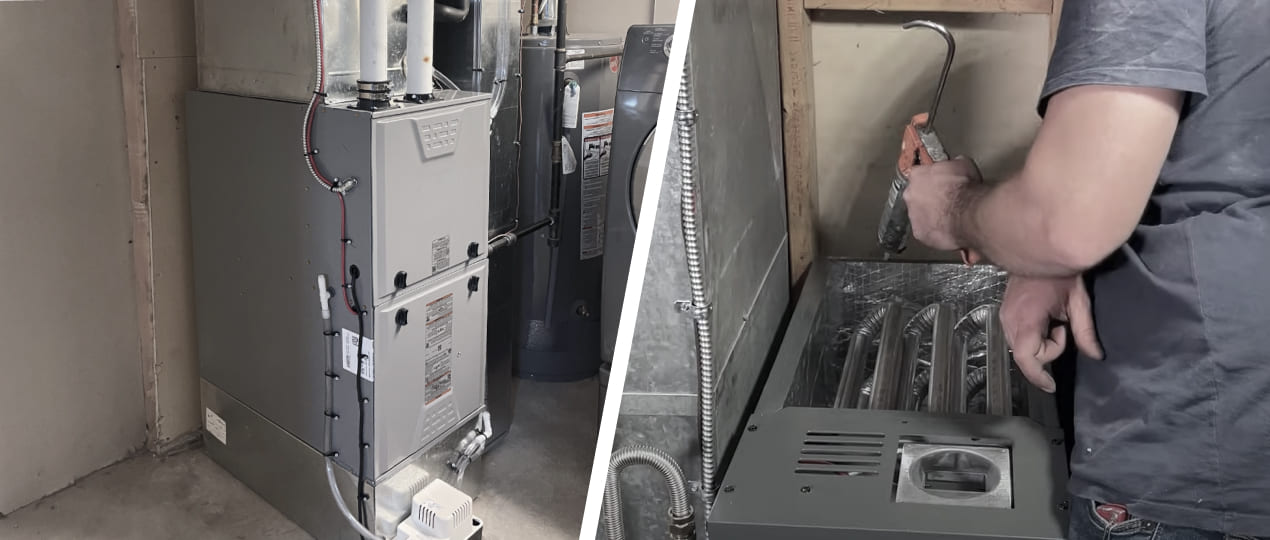
Some jobs are too critical to be entrusted to people without special training. This is the case when it comes to the heating equipment in your home. Careful and thorough installation is essential to the health, safety and comfort of your home. You can avoid unnecessary repairs in the future, it will take you less time and cost to install a new furnace, not to mention the safety of your family. Therefore, it is important to choose a reliable HVAC contractor who guarantees high quality and reliability at every step of the installation process.
Commissioning of the heating equipment
Commissioning involves not only checking that the unit is working properly but also thorough testing, where many calculations are made to maximize the efficiency of the entire system, so this critical step should not be skipped.
Subtleties of furnace installation
Preparing plenums, ductwork, gas lines, wiring and proper airflow is a large part of the complete installation process. Once the unit is set in place, it is adjusted to make sure it is level and plumb.
When installing a gas unit, it is imperative to seal the connections to the duct system using special sealant or metal foil. It is also critical to properly connect the vent pipes, ensuring that they are sloped towards the furnace for efficient condensate drainage and safety. Remember to inspect for possible leaks before completing the process.
Reconnection and sealing
After installation is complete, an important step is to seal the unit and reconnect all lines. A special sealant is used to withstand the pressure of the HVAC system. The electrical and fuel lines are also rewired at this time. Depending on the technological complexity of the new furnace you have chosen to install, additional wiring may be required. This is uncommon but may be considered when upgrading to a newer system. You may also need to install a new breaker, if necessary.
Commissioning of the furnace
Commissioning a furnace is not just a matter of checking that it is working properly but a thorough process involving dozens of calculations such as static pressure, temperature rise rate and airflow. These calculations are necessary to ensure proper operation of the equipment and to prevent problems with ventilation and comfort.
Failure to comply with commissioning requirements after you install a new furnace can result in hot and cold spots in the house, improper air exchange, increased noise, higher utility bills and shortened service life of your equipment.
Furnace testing
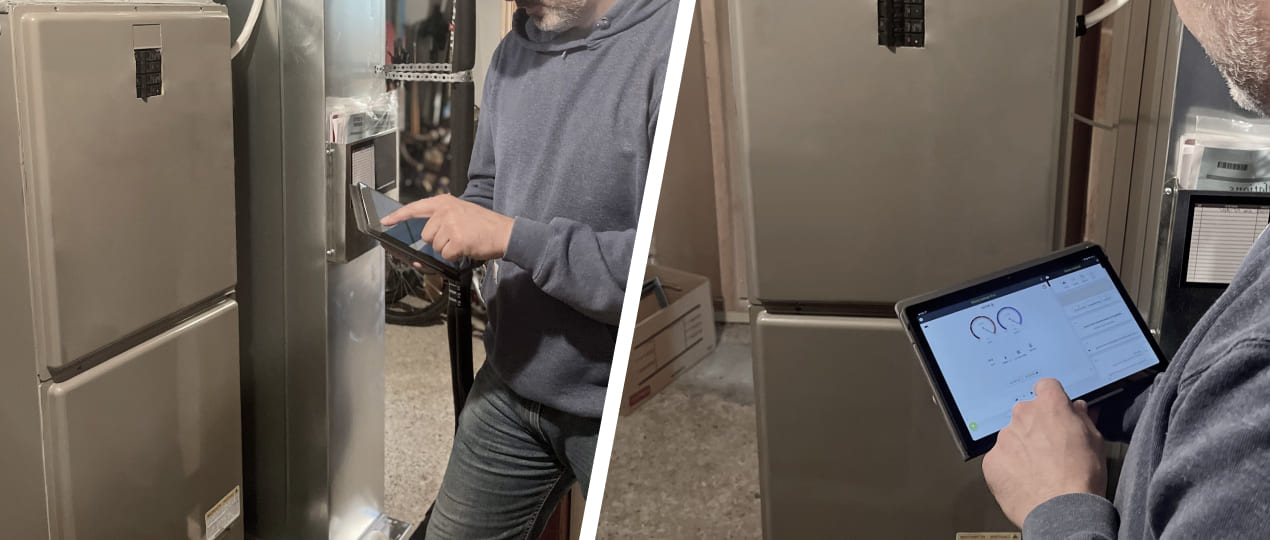
Any decent team will carry out a number of safety checks and test the furnace after installation by running it in heating mode to ensure that the outlet temperature is in line with the manufacturer’s recommendations. You should also check the gas pipework for leaks and make sure the condensate is draining properly. A suspicious smell after a new furnace is installed is a warning sign to have the unit carefully inspected again.
After the furnace has been installed
Whilst the installation itself is complete, there are some steps that need to be taken to ensure that you maximize the efficiency and long service life of the unit. It is recommended that you keep an eye on the condition of the filter and schedule regular maintenance with your HVAC company. These measures will avoid unnecessary costs and keep your home comfortable for years to come!
Dismantling of the old unit
This stage will determine how long it will take to install a new furnace. At this point, the power and gas supply have already been turned off. Next, you need to free the main unit from all connected components, such as gas lines and electrical wiring. After removal, it is important to release the air ducts and evaporator coil for a smooth installation of the new furnace. Be sure to prepare the room. This may include cleaning the space under the unit, the duct entry points and the evaporator coil. By following this quick but essential step you will ensure your entire HVAC system operates smoothly after installation!
Factors affecting the cost of a furnace
“How much does a new furnace cost with installation?” is a reasonable concern of every homeowner, but it all depends on several contributing factors:
- Fuel source Electric units are somewhat cheaper than gas units, but operating costs may make gas less expensive in the long run;
- Size The size and capacity go hand in hand. Size is roughly related to the square footage of your home (although there is a deeper calculation that HVAC professionals use). As you move up to larger and more powerful furnaces, you may notice a gradual increase in price;
- Time of year and climate Spring and early summer are considered the best time to buy a new furnace. Since this is the off-season for heating systems, manufacturers regularly offer specials and discounts and the price of having a new furnace installed is lower.
Inspection and maintenance recommendations
When homeowners neglect regular furnace maintenance on their systems, they tend to find themselves without heat on a cold winter day. And in some cases, the entire system even has to be replaced.
To make sure your furnace is working properly, an HVAC technician should check it for certain safety and performance requirements during an annual inspection. Besides, you should schedule a regular deep cleaning, replace the filter on time to prevent clogging and check for leaks.
Even if everything is working fine, preventive furnace maintenance makes a big difference, fixing any minor issues before they turn into costly repairs or replacements.
Tips for efficient use and maintenance
In order to avoid breakdowns when you least expect them, don’t leave proper maintenance to chance. You don’t need to be an expert since there are some simple steps you can take to keep your unit running optimally:
- change filters regularly;
- keep your ears open and pay attention to any strange sounds;
- keep the vents clean;
- check the pilot light;
- clean inside and around your unit;
- schedule regular checkups.
Just like your car or any other machine, your furnace is subject to wear and tear, and the less it is, the longer your unit will last!
Count on our dedicated team for excellent furnace installation
If you are looking for a fast and reasonably priced “new furnace installation near me,” our company is a worthy choice. We have been in the industry for decades and have improved our expertise over time to ensure excellent results. Our committed technicians deliver outstanding installation solutions at a fair price.
All of our specialists are certified, showing they have received the most important technical accreditation in the field. In addition, they are continually trained on the most advanced equipment and products to learn the best ways to install and maintain furnaces professionally!
REFERENCES
1. Chen, X. (2023, November). Temperature control in electric furnaces: Methods, applications, and challenges. In Journal of Physics: Conference Series (Vol. 2649, No. 1, p. 012032). IOP Publishing. https://iopscience.iop.org/article/10.1088/1742-6596/2649/1/012032/meta
2. Maoxian, G., & Kuangdi, X. (2023). Electric Furnaces, Types of. In The ECPH Encyclopedia of Mining and Metallurgy (pp. 1-5). Singapore: Springer Nature Singapore.
3. Colorado, A. F., Herrera, B. A., & Amell, A. A. (2010). Performance of a flameless combustion furnace using biogas and natural gas. Bioresource technology, 101(7), 2443-2449. https://www.sciencedirect.com/science/article/abs/pii/S0960852409015028


